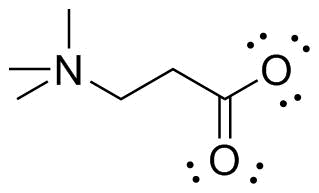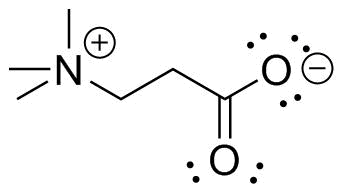Problem: Formal Charges
Determine the formal charge (if any) on each carbon, nitrogen and oxygen atom in the structure shown below. All lone pairs in the molecule are shown.

Analysis
In order to determine formal charge, we have to know how many valence electrons the neutral atom would bring (formal charge = 0). Based on the location in the periodic Table, carbon has 4, nitrogen has 5, and oxygen has 6. We then look at the structure, and determine the "formal possession" of electrons by the atom:
- All covalent bonds provide one valence electron to the atom. Double bonds provide 2 electrons (one per bond), and triple bonds 3.
- Lone pair electrons are entirely owned by the atom.
- The formal charge is the number the atom would have in a neutral atom minus the number formally owned by the atom in the structure.
We'll start with the three methyl carbons attached to the nitrogen (they are all identical). They are bonded each to 3 hydrogens (not shown), so there are 4 covalent bonds to carbon (4 valence lectrons) and no lone pairs; the formal charge is 4 - 4 = 0.
Nitrogen is next; it is engaged in 4 covalent bonds and has no lone pairs, so again it formally has 4 valence electrons. Neutral nitrogen has 5, so the formal charge is 5 - 4 = +1.
You can work out the three other carbons; you should recognize that they are all neutral (formal charge = 0).
Let's look at the two oxygens now.
The single bonded oxygen with 3 lone pairs posesses one electron from the covalent bond, and a total of 6 (= 3 x 2) from the lone pairs--a total of 7. Neutral oxygen would have 6 valence electrons, so the formal charge is 6 - 7 = -1. Be sure to pay attention to which way to do the subtraction so you know whether the charge is + or -!
The double bonded oxygen has 2 electrons from the covalent double bond, and 2 lone pairs for a total of 6 valence electrons. The formal charge is 6 - 6 = 0.
A full representation is shown below. Since there is one positive and one negative charge, the molecule as a whole is neutral.

Try drawing the molecule and displaying the 3-D structure (you will have to add charge with the +/- button, or the hydrogen count may be adjusted automatically for a neutral atom).

